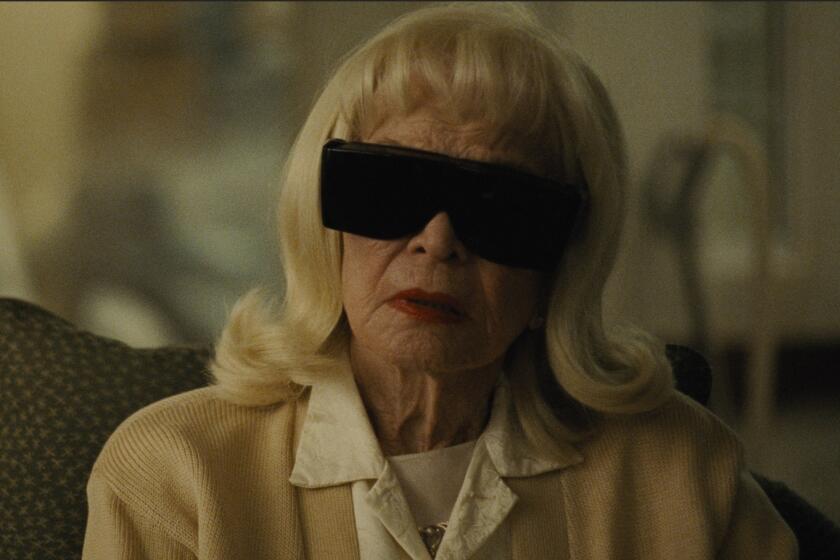The endless battle hymn
The Culture of War
Martin van Creveld
Ballantine/Presidio Press: 490 pp., $30
--
The fact that two major Hollywood films were recently released, “Miracle at St. Anna” and “The Lucky Ones” (both deal with American soldiers in battle), or the fact that combat boots and camouflage pants are all the rage among teenagers comes as no surprise to Martin van Creveld. The connection between culture -- popular as well as high-brow -- and war is a constant in history, he writes, and a mainstay of civilization. “Fighting itself can be a source of joy, perhaps even the greatest joy of all,” he explains in one of many observations likely to irk the “sentimental” left, as he labels it, as well as the “hard-headed” right. But Van Creveld, one of the world’s preeminent military historians and a social critic renowned for his provocative views, scarcely flinches. “I have always enjoyed a good fight,” he vaunts.
Part of Van Creveld’s thesis speaks to me. Having participated in several Middle Eastern wars, I can attest to their horror as well as to their prurient allure. Along with Churchill, I’ll also confess: “There is nothing in life so exhilarating as to be shot at with no effect.” I have written and taught military history and commented on contemporary warfare. But finding war personally exhilarating and academically compelling is still far from asserting, as Van Creveld does, that war is integral to culture -- more, that culture cannot survive without it. Proving such a blanket, controversial claim would require a scholar of immense erudition and gall. Van Creveld could be that scholar.
Readers of the first 300 pages of “The Culture of War” will marvel at the encyclopedic cataloging of the myriad bonds between humanity’s loftiest and deadliest endeavors. From the “Epic of Gilgamesh” to “The Odyssey,” “The Iliad” and the Bible, war and culture have always been linked, as Van Creveld shows. They have been welded together by the drama, the near-death thrill and even sexual titillation of combat. War not only permeates literature -- Shakespeare’s plays are especially martial -- but also art forms from the earliest pictographs to the Vietnam Veterans Memorial.
Similarly, warfare has left an indelible imprint on the evolution of music, on architecture and on the rituals that transformed the prohibition against taking another’s life into a sacred prescription for murder. Even the games we play, whether chess or football or the latest iteration of the video game “Doom,” are byproducts of war. Rather than being the antithesis of culture, Van Creveld demonstrates, war is its “magnificent counter-part.”
Yet Van Creveld is not content with merely listing the universal and millennium-long intersections between culture and war. He also assails those who would challenge his ideas. Ruthlessly targeted are those scholars who chart the culture-war connection’s decline in the post-World War II period. “To argue that humanity is losing its taste for war and that war itself is on its way to the dustbin of history is worse than misrepresenting the truth,” Van Creveld counters, noting that some 226 wars were fought between 1946 and 2002 and that the number of refugees has quadrupled in the last 40 years alone. Indeed, the reduction in the number of wars between modernized countries -- less the result of pacifism, he insists, than of the fear of nuclear holocausts -- merely obscures the undiminished number of conflicts among developing nations. Ignoring that trend, Van Creveld maintains, “amounts to a crime against that very humanity that is beyond the pale.” He also overturns the widely held assumption that democracies never make war on one another, citing the two Anglo-American wars of 1776 and 1812 and the American Civil War between the democratically elected Union and Confederate governments.
Far from dry, Van Creveld’s writing is studded with historical gems: that the ancient Greeks regarded their warships as feminine, for example, or that World War I aces occasionally painted their planes in dazzling colors, sacrificing safety for bravura. His prose, in which a U.S. Army jeep can become a “frowning garbage can turned on its side and provided with wheels,” is often original. But some readers might be incredulous to read that the U.S. Navy toughens its recruits by “limiting” them to seven hours of sleep per night, that Egyptian Field Marshall “Hakim El Amar . . . was convicted and sentenced to death” for failing in the 1967 Arab-Israeli war (Abdel Hakim Amer was, in fact, neither tried nor condemned) or that Christianity in America “has lost its teeth.” Men might balk at his assault on novelist Tom Clancy for depicting Americans as “upright people who never let down their country, their friends, or their family,” and women would surely bristle at lines like “Alas, for many men, the time when they could capture an enemy woman, take her home, sleep with her, and breed her are gone.” Such glitches in an otherwise impressive work might be overlooked, if not for its final chapters.
A full quarter of the book is devoted not to chronicling the past connections between culture and war but to speculating about future threats to that nexus. Here, the august historian gives way to the quirky commentator who has assailed Israel’s occupation of the West Bank for softening the Israeli army and whose pronouncements on the genetic limitations of women were denounced by female students and faculty members at his own Hebrew University. Now Van Creveld lives up to his curmudgeonly reputation by identifying the four factors that, he claims, can undermine a society’s ability to defend itself. The first two -- the breakdown of law that leads to the emergence of rapacious “wild hordes” and the worship of war that fuels a Nazi-like “soulless machine” -- are hardly controversial. The concluding two, though, are incendiary.
“Men without chests” is Van Creveld’s term for the pampered males of today’s hyper-industrialized societies who will not bear arms irrespective of the provocation. Though the designation might apply to certain European states, it scarcely pertains to the United States, whose armed forces have been engaged in combat operations in the Middle East and elsewhere, almost uninterruptedly, since the early 1980s. But the true exemplars of chestless men in Van Creveld’s opinion are Diaspora Jews. Before Zionism re-empowered them, he posits, “Jews were like a flag on a windless day,” feckless and stooped. That assertion would come as a shock to my father, who, like thousands of American Jews, fought his way from Normandy to Berlin, and served in the Korean War as well.
More debilitating than epicene men, however, are the militant feminists. These, Van Creveld alleges, undermine society’s defenses by mocking the troops and even wishing for their deaths while demanding an equal status for women in the military. Physically weaker than men, women soldiers lower combat effectiveness and divert their male counterparts from the serious task of killing. Infected with feminism, culture “will surely collapse like the house of cards,” forfeiting its “ability to fight and win.” That conclusion is unlikely to impress the officer I recently met aboard the USS Truman, the mother of a 2-year-old and the commander of an F-18 squadron, five of whose pilots are women.
Marred by these repellent and largely unsubstantiated theories, “The Culture of War” manages to tarnish its many contributions to our understanding of the ways in which conflict and societies interact. Van Creveld ultimately does himself -- and us -- a disservice, and leaves the question “Are war and culture indeed inseparable?” unanswered.
More to Read
Only good movies
Get the Indie Focus newsletter, Mark Olsen's weekly guide to the world of cinema.
You may occasionally receive promotional content from the Los Angeles Times.










